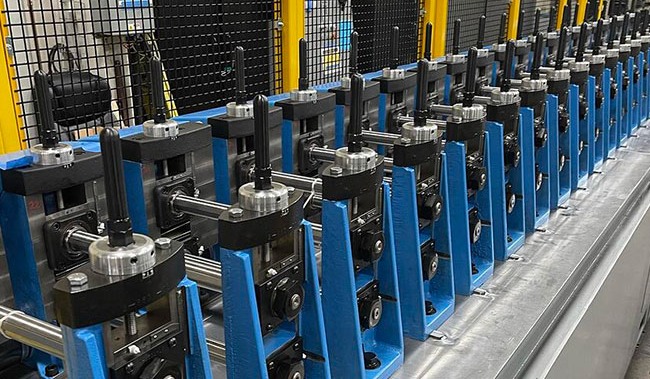Metal fabricators can get started with roll forming in a variety of different ways. Many come from press brake operations, and more specifically, they come from an operation that has extrusions. In this post, we'll discuss changing extruded parts into roll formed parts for higher quality and efficiency in the shop.
From Extrusions to Roll Forming
Extrusion is a process used to manufacture objects, typically from aluminum, from a fixed cross-sectional profile by pushing material through a die of the desired cross-section. Many fabricators, when they reach a certain volume of production, may begin to ask if their extruded parts can be roll formed.
Aluminum extrusions can be expensive. They typically have thicker material and thinner material, depending on the profile and what they're making, where roll forming has been far less expensive, depending on the application. For some manufacturers, roll forming can actually help them get away from aluminum. Extrusions have a very specific form that cannot always be mimicked in roll forming, but sometimes they can be.
If a manufacturer needed to add other features to an extrusion, such as secondary holes or a shear form, you could add these steps to a press brake or roll forming line. A manufacturer can press brake the part or initially put add features in the part that are requiring multiple applications. As that volume increases—it may not be that million or 500,000, but maybe it's 200,000 feet or parts per year—that accounts for extra time and that labor time. Moving an extrusion from a press brake to a roll forming line, you can control what's being generated and at what quantity while saving time and labor.



